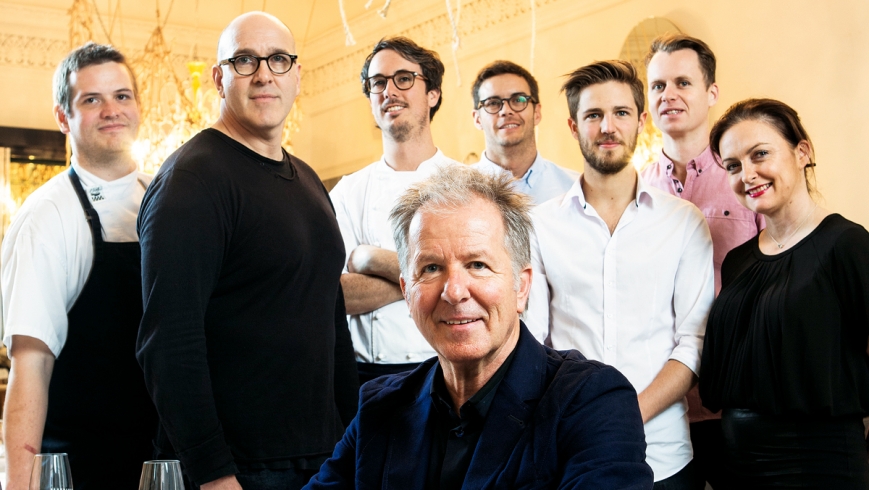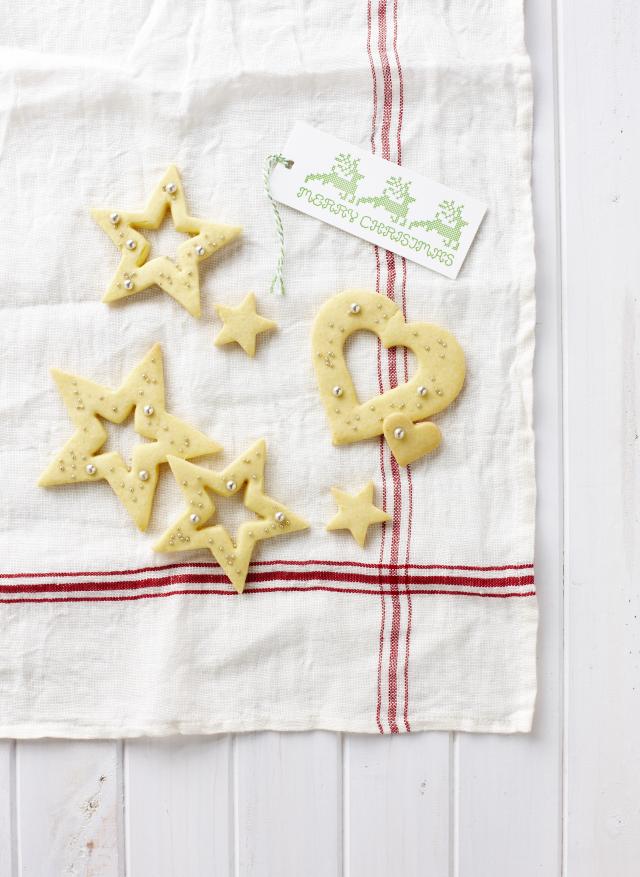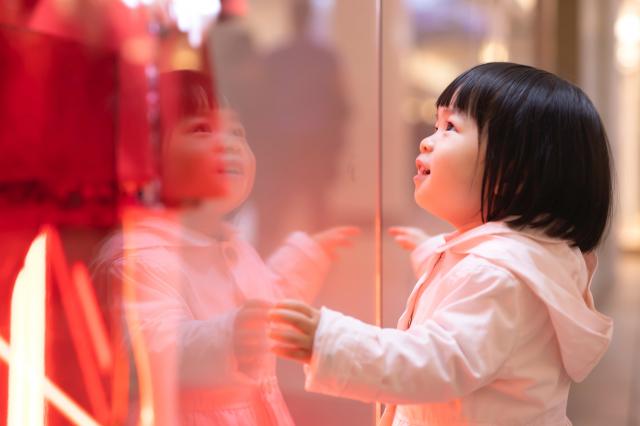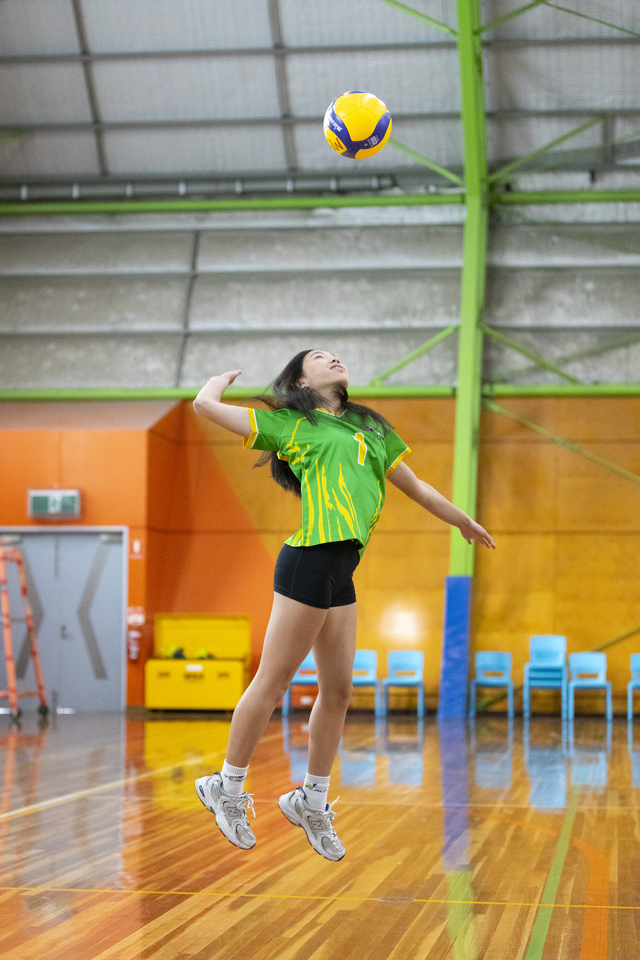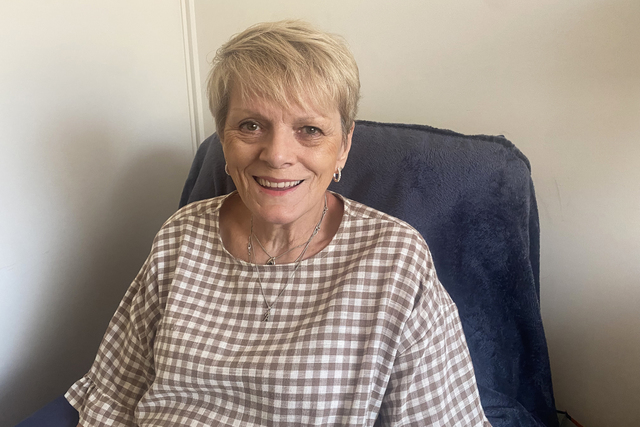It was just after 11pm on January 17 when restaurant tsar Frank van Haandel got the call from his general manager, Anthony Musarra, alerting him that a fire had broken out in the kitchen of his iconic St Kilda restaurant, the Stokehouse, during the packed Friday-night dinner service. Spreading alarmingly quickly, the blaze engulfed the 110-year-old building, forcing the evacuation of more than 200 guests.
As van Haandel raced to the scene, jumping red lights in his car, he could tell by the quiver in Musarra’s voice it was serious. All he could think about was the possibility of a gas explosion, recalling a terrible news report just a couple of weeks earlier about three police officers caught in a huge blast as they attended an incident in a Middle Park apartment block. He pleaded with Musarra, “Is the f***ing gas off?”
Things could have been much worse. Thanks to the swift and professional response of the Stokehouse team, the restaurant was evacuated, with some diners still clutching half-full wine glasses as they watched the inferno. So quick was their retreat, and so intense the blaze, that staff were unable to retrieve their belongings.
“They didn’t have their mobile phones, keys or wallets, so they were locked out of home, out of their car, couldn’t call family or friends and had no money to get a cab home,” van Haandel says. “They did an amazing job.”
As the sun rose over Port Phillip Bay on Saturday morning, van Haandel and Musarra could do little but look on in despair as the Stokehouse slowly crumpled in on itself, even with 15 fire trucks in attendance. In a daze, emergency plans were made to relocate the wedding of an unfortunate young couple due to marry at the venue that afternoon.
A brief flutter of dark humour passed between the two men as they watched the charred bones collapse.
“Not in 25 years that we’ve been in St Kilda have we had any kind of signage on the Stokehouse,” van Haandel says. “We finally got a sign up in December and it burned down in January. The ceilings, the walls, everything caved in and that bloody sign just stood there. It was the last thing to fall.”
As awful as the situation was, the glimmer of hope contained in that irony was not lost on them. “Anthony and I felt the same: you can’t beat us.”
While the immediate and staggering outpouring of support on social media offered some comfort for a shaken van Haandel, who jokes that you usually have to die before receiving such accolades, he keenly felt the loss of quarter of a century’s hard work.
“I certainly grieved for about six or seven weeks,” he says. “When I went into work on the Monday morning, Anthony and Carly Skinner, our chief financial officer, said, ‘We need to make some major decisions’. I said, ‘I made one this morning, to get out of bed’. I was pretty distraught.”
One of the first casualties of the fire was the recently won and hard-fought battle to take over the space formerly occupied by Guillaume Brahimi at the Sydney Opera House – a project that would have required van Haandel and Musarra’s full attention.
“It bloody hurt,” van Haandel says of walking away from the deal. “We spent 10 quite intense months on winning that; we were determined.”
But the first priority had to be rebuilding the Melbourne business.
The idea of a temporary pop-up restaurant rising from the ashes on the foreshore was born the night after the fire; just two weeks later it was up and running, under a marquee originally intended for the grand prix, supplied by van Haandel’s good friend Rick Jamieson, owner of Harry the Hirer.
“Once we made a decision to do the pop-up, there was a dramatic shift in the energy and morale of the staff,” van Haandel says.
The Stokehouse sits on crown land, which makes the City of Port Phillip the venue’s landlords. The council had a contractual obligation to support an efficient return to business for van Haandel, who holds a 21-year lease for the site, and mayor Amanda Stevens and her deputy Serge Thomann were staunch supporters from the outset. Stevens, who was out of town the night of the fire, joined Thomann, van Haandel and Musarra at the charred scene the following morning.
“It was quite emotional to see; they were still putting it out,” she says. “It was such a shock. We want to make it as easy as possible to see a much-loved venue return to what it should be.”
Soon plans were in motion for a new permanent Stokehouse on the St Kilda foreshore site, with renowned architect Robert Simeoni planning a sleeker, contemporary venue that makes the most of the bay views. As engineers needed constant access to the site, the pop-up’s days were numbered.
Van Haandel and his brother John cut a swathe through Melbourne’s restaurant scene after moving from Bendigo in the 1980s. Together they established some of the city’s most revered restaurants, including the Stokehouse, and Circa, The Prince. Following a fraternal split in 2007, Frank and his wife Sharon took control of The Stokehouse, and their Van Haandel Group now encompasses the Arts Centre’s Fatto Bar & Cantina, the State Library’s Mr Tulk café, a Stokehouse restaurant in Brisbane and the Stokehouse City, formerly known as Comme, in Alfred Place.
A quietly passionate man with a dapper dress sense, van Haandel draws on the more direct energy of Musarra as we talk over a crisp glass of Snake + Herring chardonnay in the grand bar space to one side of the main dining room of the newly minted Stokehouse City.
Letting go of the 80 staff who worked at the Alfred Place venue’s previous incarnation as Comme was the next difficult decision for the Van Haandel Group. But priority number one was maintaining the long-serving Stokehouse crew. For van Haandel, they’re the lifeblood of the business he has run for more than 30 years and the reason his restaurants are so successful, with a clutch of major awards across the decades.
“We have a very dynamic, well co-ordinated team of people,” he says. “It was critically important to keep the core together.”
Architect and interior designer Pascale Gomes-McNabb, who worked on a multi-million dollar makeover of the historic Stokehouse in St Kilda in 2010, and was already engaged to work on the Opera House space, was called on to bring a little of the seaside sensibility to the city while envisioning a fresh identity for the venue.
Sharing the two-storey layout of its St Kilda predecessor, the city venue has a bar and eatery downstairs with driftwood-style features, bleached parquetry floors and vast sail-like lamps. Pendant neon strips add an urban edge to the beach-house vibe. As with the old place, the upstairs dining space is more formal, though still relaxed, with the former Comme’s chandeliers now caught in vast rope fishing nets.
“It was a joy and a lot of fun to be able to think of fun ways to recreate, however whimsical, a feeling of being beachside in this stately, grand space,” Gomes-McNabb says. “You can try to bring a notion of it, however fleeting, with sun and salt-bleached timber and outdoor fabrics like calico and canvas. It was an honour to continue the riff that was started four years ago upstairs in St Kilda.”
Meanwhile, those who hanker for a replica of the lost St Kilda pavilion may be surprised by Simeoni’s grand plan for its resurrection on the foreshore. But Musarra says change is necessary.
“I know a lot of people want back exactly what was gone,” he says, “but the outpouring of shared experiences were about what happened inside the building. We need to recreate what Stokehouse was, albeit in a brand new building. We’ve taken advantage of that with Robert’s design and it’s very sexy.”
Van Haandel adds that the fresh start allows them to improve on a few details, including a new outlook that takes in the city’s glimmering skyline, makes more of the water and connects better with the upper esplanade. A dramatic new entrance will cut through a restored sand dune.
“The old Stokehouse was charming; we all have an emotional attachment but it didn’t function as well as it could. We decided to do something seriously out there and it’s very exciting. That changed our mood immediately from grieving for the old to the blue sky of opportunity. Robert has created theatre, with a real sense of arrival, and the space will capture the late afternoon sun.”
A few weeks into the life of Stokehouse City and the new city crowd has slightly different expectations. “It’s a different beast, pacier and tighter,” Musarra says. “There’s the five o’clock drinking crowd after work and a hospitality crowd on Sunday.”
“When people go to a beach environment, they’re there for the afternoon,” van Haandel adds. “The city environment is pretty express. Our first question will always be, ‘How much time do you have?’ ”
There are grand plans afoot, in conjunction with City of Melbourne, to rejuvenate the fairly tired laneway and bring a bit of the buzz more readily associated with the CBD’s celebrated thoroughfares to Alfred Place. “We need to invigorate the space,” van Haandel says. “It’s an amazing link between Chinatown and Fed Square.”
Plenty of St Kilda regulars have made their way into the city too. More than 600 guests were invited for the opening night cocktail party that was supposed to run from 6pm until 9pm. Almost half that again showed up.
“People were phoning to say, ‘I didn’t get an invite, can I bring some friends?’ ” van Haandel says. “We were still dancing past midnight.
“That’s what the Stokehouse is all about. We love a party. It was a great opportunity for the staff, and for Anthony and I to – for the first time – catch our breath and let go a little. It was a night to remember.” \

